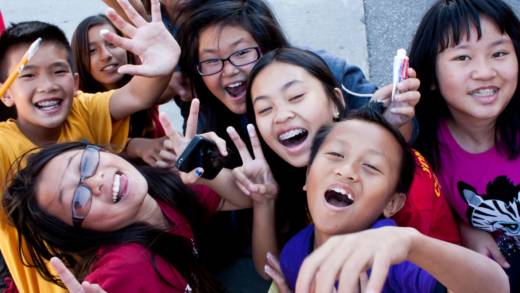I teach science at a school that believes in emergent curriculum. If the class wants to go in a certain direction, I have the freedom to follow their interests. If a student asks me a question I don’t know the answer to, that is a good thing. This means I can become “one of the students” — a fellow seeker of knowledge in an atmosphere of excitement, uncertainty and adventure.
So what happens when I need to do “direct instruction” and actually teach specific content? Hint: Google images, YouTube and improv.
Although lecturing is a dirty word at my school, we still recognize the need for direct instruction. There are moments when a teacher clearly explaining a complex concept is invaluable. There are certain fundamental principles that students need to understand before they can delve into their own projects, but spending hours before class creating a PowerPoint deck is not my idea of a good time.
So what’s a busy, science-loving, PowerPoint-hating teacher to do? Well, I generally spend a couple minutes generating an outline of the four or five concepts I want to teach that day. When class starts and it’s time to introduce protein synthesis, I simply do a Google image search. I click on the image with the right level of detail, and then have students attempt to explain it to me.
I usually give the class about 10-15 seconds to silently examine the image (so the kids whose hands shoot up don’t take up all the oxygen in the room). I often cold call, celebrating when a student is willing to admit “I don’t get it,” and has to articulate exactly where they’re getting stuck, or what they do get. After one student walks me through that first image, I’ll pull up a couple more images of the same concept, giving different students a chance to engage with the idea, while reinforcing the idea that these are just models that emphasize slightly different parts of the phenomenon. Although I have a general sense of where I want to go next, students will often have questions that send us off on a related tangent.
Student: Wait, what’s the difference between DNA and RNA?
Me: [types in “DNA vs. RNA” in Google image search] Here’s a beautifully illustrated table comparing the two.
Student: Does the mRNA ever fold back on itself?
Me: I don’t know, I’ve never thought about that before. What do you think?
Student: Uh, I guess so. ‘Cuz of base pairing
Me: Let’s search for mRNA folding and see what comes up. . . Look at those loops and stems!
Taking the time to chase down student question in real time makes for a far more invigorating atmosphere than me simply marching through pre-ordained slides. Students feel ownership of their learning process. They know that their curiosity will be rewarded by my excitement at getting to explore a surprising question (rather than the response: We don’t have time for that, we need to get to the next slide).
